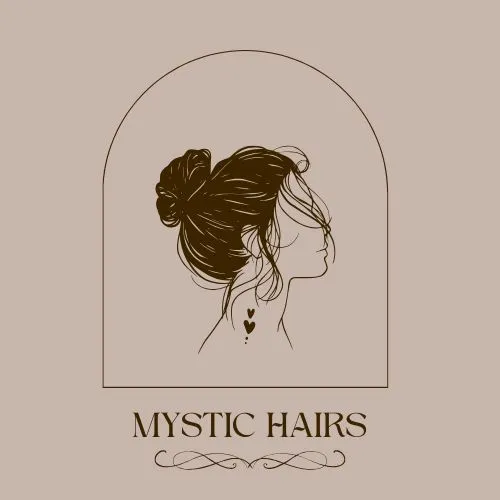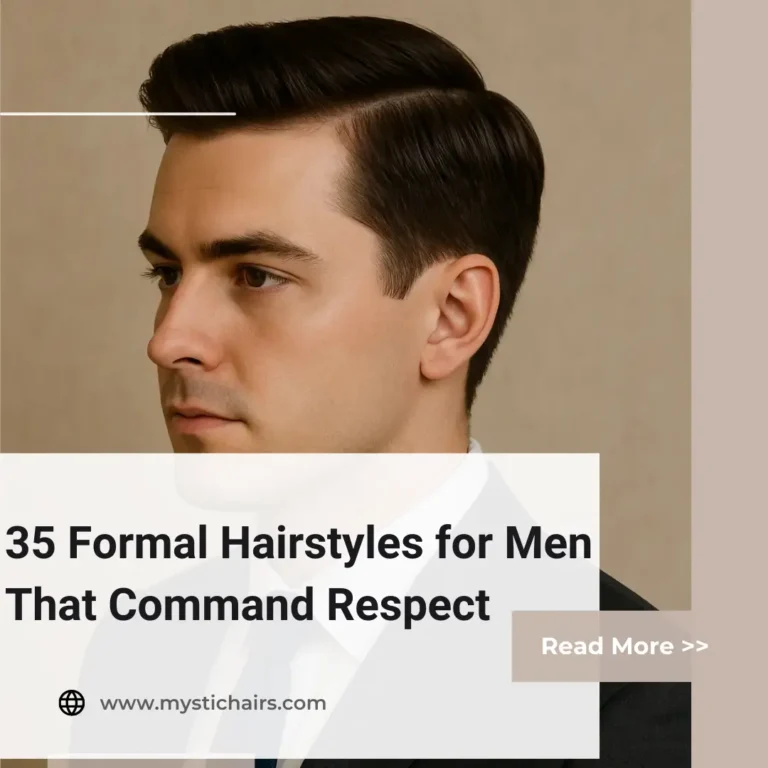How to Repair Damaged Hair Naturally
How to repair damaged hair naturally is a question many people ask when they notice their strands becoming dry, brittle, or lifeless. Years of heat styling, chemical treatments, environmental stress, and even improper brushing habits can leave your hair looking far from healthy. While salon treatments promise fast results, they often rely on harsh ingredients that only mask the damage.
Fortunately, nature offers plenty of solutions to help you restore your hair’s vitality without relying on expensive or chemical-laden products. From nourishing oils to nutrient-rich masks and lifestyle changes, these natural remedies help bring your hair back to life.
How to Repair Damaged Hair Naturally
Below, we’ll explore 15 effective methods to repair damaged hair naturally at home—giving you smoother, stronger, and shinier locks, one step at a time.
1. Deep Condition Weekly With Natural Oils
One of the most effective ways to repair damaged hair naturally is through regular deep conditioning using pure, nutrient-rich oils. Coconut oil, olive oil, and avocado oil are full of fatty acids that penetrate the hair shaft, restoring moisture and softness from within. Applying these oils weekly can help seal split ends, reduce frizz, and promote a smoother texture. Just warm a small amount, apply it evenly from mid-length to ends, and leave it on for at least 30 minutes before washing.
Deep conditioning with natural oils helps restore the lipid barrier of your hair, which is often stripped by over-washing or heat styling. This protective layer prevents moisture loss and shields against further damage. Over time, these weekly treatments help rejuvenate even the most brittle strands, making them shinier and far more manageable without the use of chemicals.

2. Avoid Heat Styling Tools Whenever Possible
Minimizing the use of flat irons, curling wands, and blow dryers is crucial when trying to repair damaged hair naturally. Heat strips away essential moisture, weakens the hair structure, and leads to breakage over time. If you must use heat, always opt for a low-temperature setting and apply a heat protectant made from natural heat-blocking ingredients.
Giving your hair regular breaks from heat styling allows it to regain strength and elasticity. Try embracing your natural texture by using protective styles or air-drying techniques. Over time, you’ll notice reduced breakage, healthier ends, and enhanced natural shine.
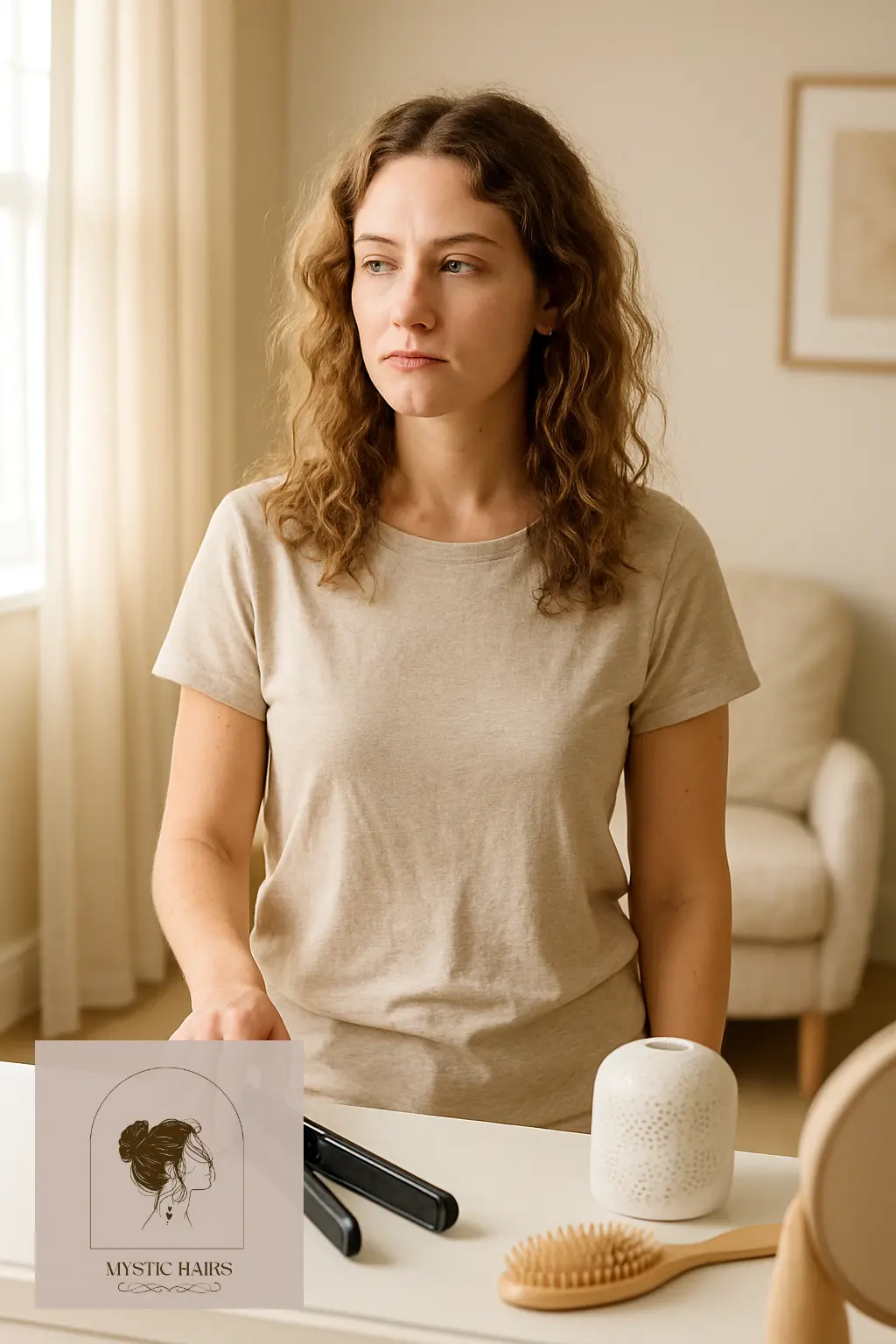
3. Use Aloe Vera for Moisture and Repair
Aloe vera is a gentle, natural remedy known for its soothing and hydrating properties. It is especially effective for repairing hair damage caused by dryness and scalp irritation. Rich in enzymes and vitamins, aloe vera helps rebuild the hair’s outer layer, restoring flexibility and resilience.
Apply fresh aloe vera gel directly to your scalp and hair, let it sit for 30 minutes, then rinse. This treatment helps hydrate each strand and strengthen the hair shaft. Using natural aloe vera treatments regularly encourages better moisture retention, reduces itching or flaking, and promotes a healthier scalp environment.

4. Trim Split Ends Regularly to Prevent Breakage
While trimming may seem counterintuitive when trying to grow out damaged hair, removing split ends is essential to long-term recovery. Split ends can travel up the hair shaft, leading to more significant breakage if not addressed. Regular trims every 6 to 8 weeks promote healthier growth and a fuller appearance.
Even when you’re following a routine to repair damaged hair naturally, allowing dead or split ends to linger can compromise your progress. Maintaining clean ends reduces tangling and promotes smoother styling without the need for excessive brushing or heat tools.
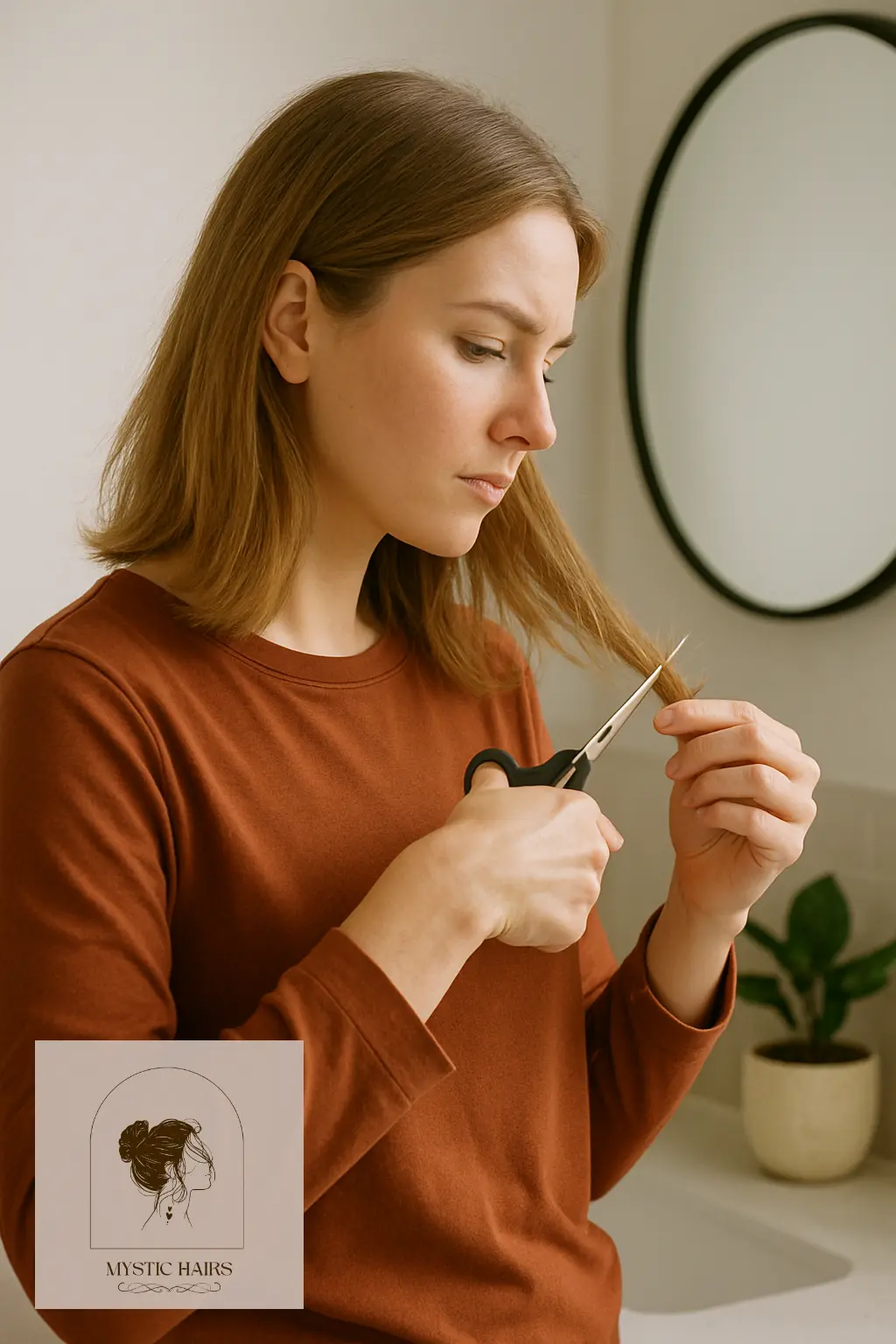
Learn how to grow thicker eyebrows naturally with oils, herbs, and home remedies. Boost eyebrow growth safely without chemical treatments for fuller, healthier brows.
5. Rinse Hair With Cool Water After Washing
Switching from hot water to cool water rinses helps seal the cuticle layer, preventing moisture loss and reducing frizz. This simple habit is one of the easiest ways to enhance the results of natural hair repair methods. Cool water flattens the hair shaft, locking in moisture and leaving hair looking shinier and smoother.
Incorporating a cool rinse into your hair wash routine supports the effects of conditioning treatments and masks. It also reduces the risk of heat damage from hot showers, especially if your hair is already fragile or porous.
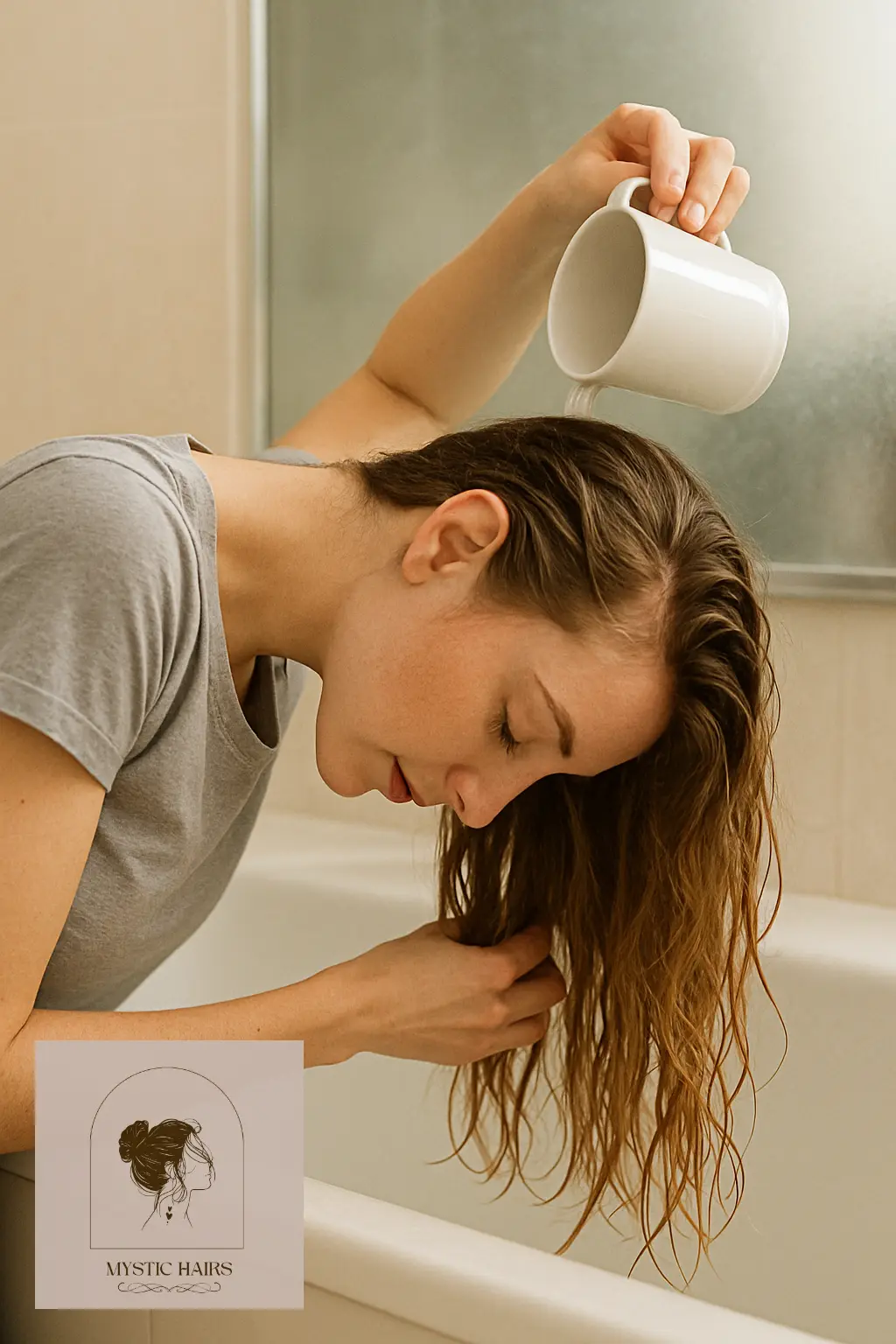
6. Protect Hair From Sun and Environmental Damage
UV rays, pollution, and harsh winds can all worsen hair damage, especially if your hair is already weakened. To repair damaged hair naturally, it’s important to protect it from environmental aggressors. Wear hats or scarves when outdoors for long periods and consider natural UV-blocking oils like sesame or carrot seed oil for added protection.
Shielding your hair from daily environmental stress helps preserve the moisture and nutrients you’ve applied through treatments. Think of it as giving your hair a barrier against further harm, which helps retain the progress you’re making with your natural repair efforts.

7. Apply Egg Masks to Strengthen and Rebuild
Eggs are a rich source of protein and biotin, both of which are essential for rebuilding weak, brittle strands. Creating a simple egg mask at home can greatly assist in your journey to repair damaged hair naturally. The protein fills in gaps in the hair cuticle while the yolk’s fats deeply nourish and soften the hair.
Mix one egg with a tablespoon of olive oil, apply it to damp hair, and leave it on for 20–30 minutes before rinsing with cool water. Repeat every two weeks for best results. This age-old remedy strengthens the hair shaft, boosts shine, and reduces breakage from within.

8. Massage Your Scalp to Stimulate Growth
Scalp massages not only feel amazing but also improve blood circulation, promoting hair growth and strengthening the roots. When you massage your scalp with natural oils like castor or rosemary, you stimulate the hair follicles and support the regrowth of healthier, stronger strands.
Regular scalp stimulation improves nutrient delivery to the roots and encourages thicker, fuller growth over time. It also helps distribute the natural oils your scalp produces, contributing to overall moisture and shine as you repair damaged hair naturally.
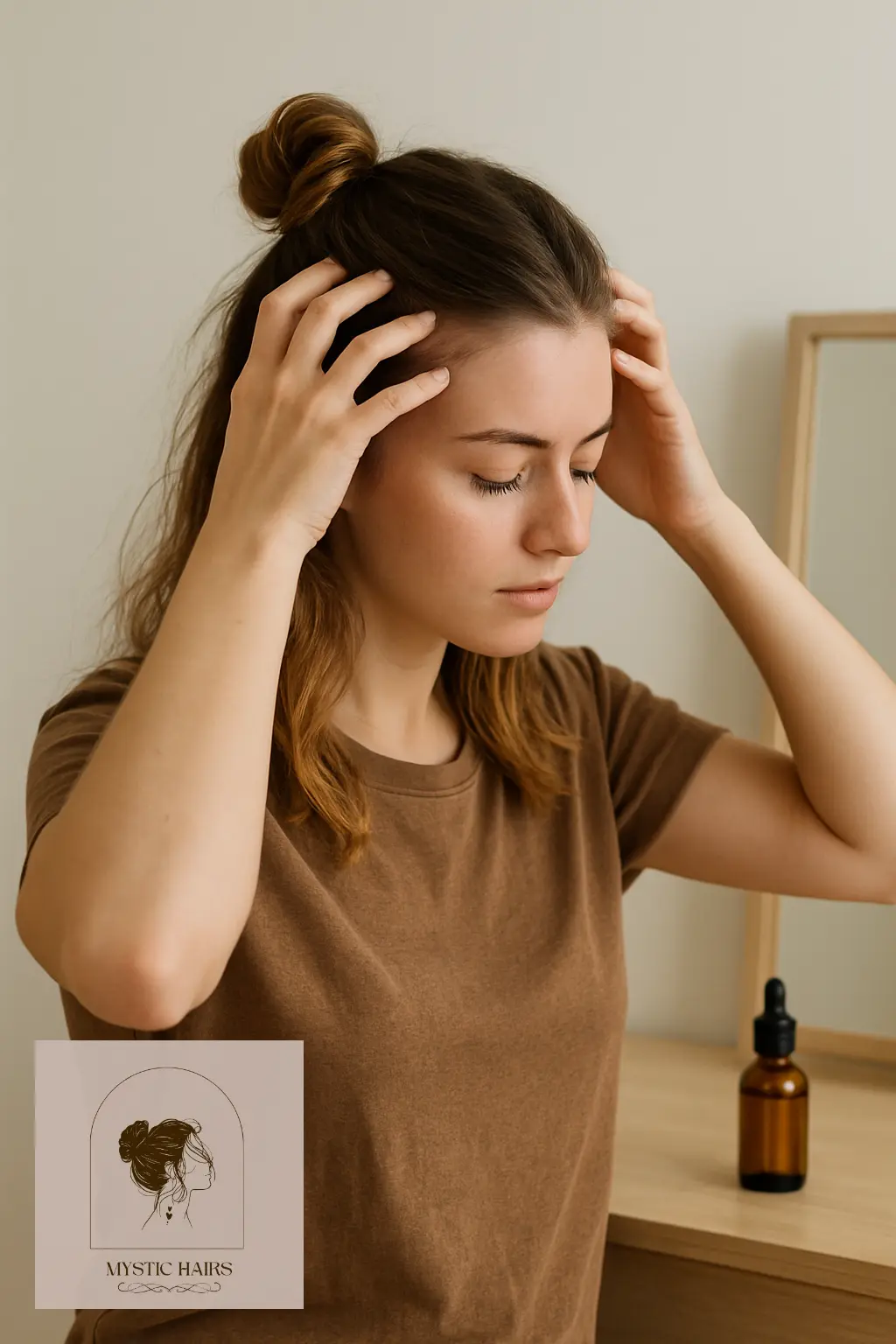
Discover natural methods to make your hair softer, shinier, and healthier. Use nourishing oils, masks, and simple home remedies for silky-smooth hair without chemicals.
9. Switch to a Gentle, Sulfate-Free Cleanser
Most commercial shampoos contain sulfates, which are harsh detergents that strip natural oils and worsen dryness. Switching to a gentle, sulfate-free shampoo is a key step to repair damaged hair naturally. These natural alternatives cleanse your scalp without disrupting its oil balance, preserving your hair’s moisture and softness.
Look for plant-based cleansers or use DIY options like diluted apple cider vinegar rinses. Over time, you’ll notice reduced scalp irritation, less frizz, and better texture, especially if you follow up with moisturizing treatments. Avoiding harsh chemicals is essential for preventing further damage during the recovery phase.
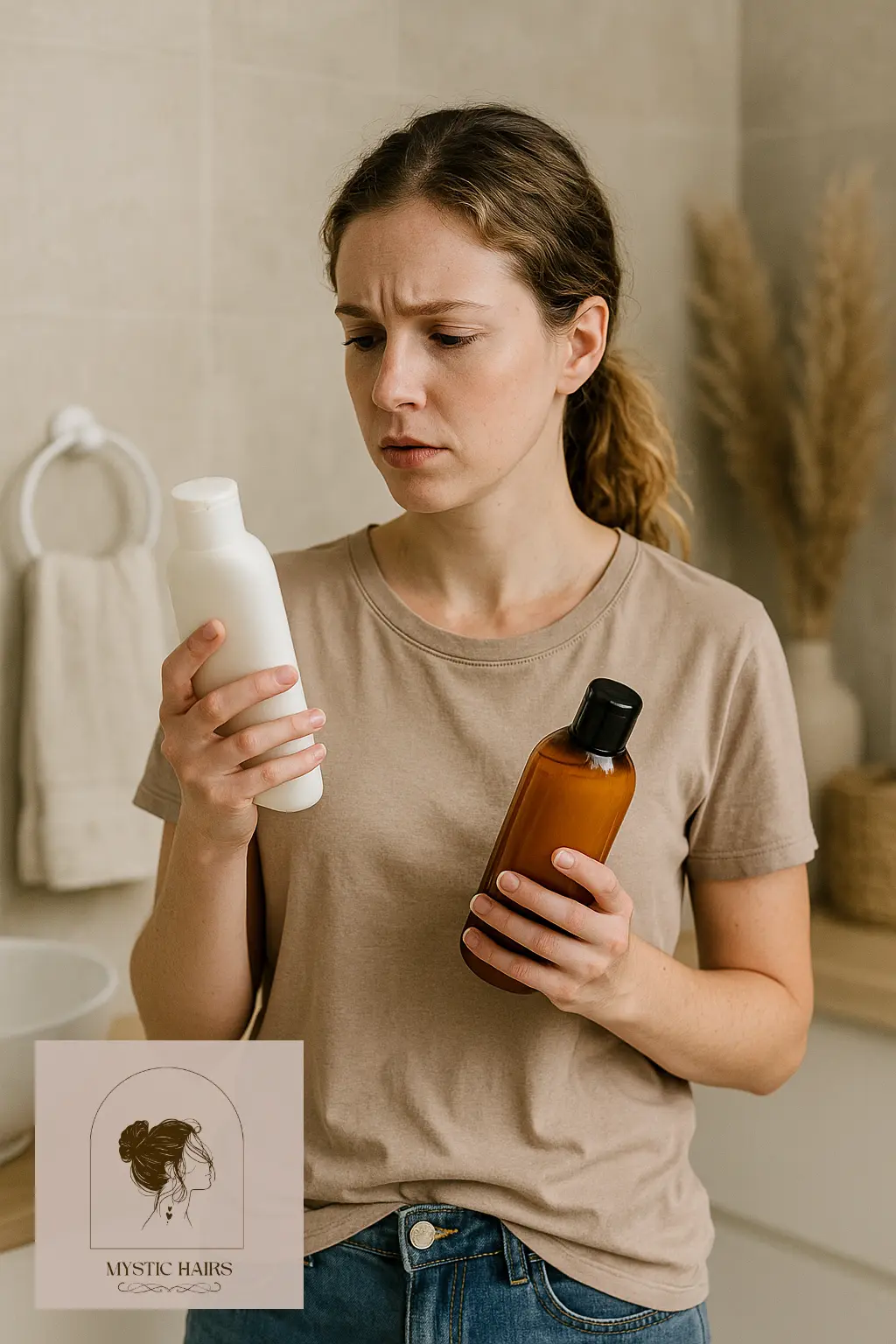
10. Eat a Balanced Diet to Fuel Hair From Within
Your hair’s health reflects your internal well-being, so what you eat plays a significant role in your ability to repair damaged hair naturally. A diet rich in vitamins A, C, E, zinc, and omega-3 fatty acids supports strong follicles, reduces shedding, and encourages healthy new growth.
Incorporate foods like leafy greens, avocados, nuts, seeds, and berries for a nutrient boost. Drinking enough water also helps keep the scalp hydrated and prevents brittleness. When your body receives the right nutrients, your hair becomes more resilient and better able to recover from damage.

11. Use Rice Water Rinses to Boost Strength and Shine
Rice water has been used for centuries as a natural hair treatment due to its high content of amino acids, inositol, and vitamins. This starchy liquid helps repair damaged hair naturally by smoothing the cuticle, increasing elasticity, and reducing friction during styling.
After shampooing, pour fermented rice water over your hair, leave it in for 10–15 minutes, then rinse thoroughly. Use this rinse once a week for noticeable results. Hair becomes shinier, feels stronger, and breaks less easily—especially when combined with other protective natural remedies.
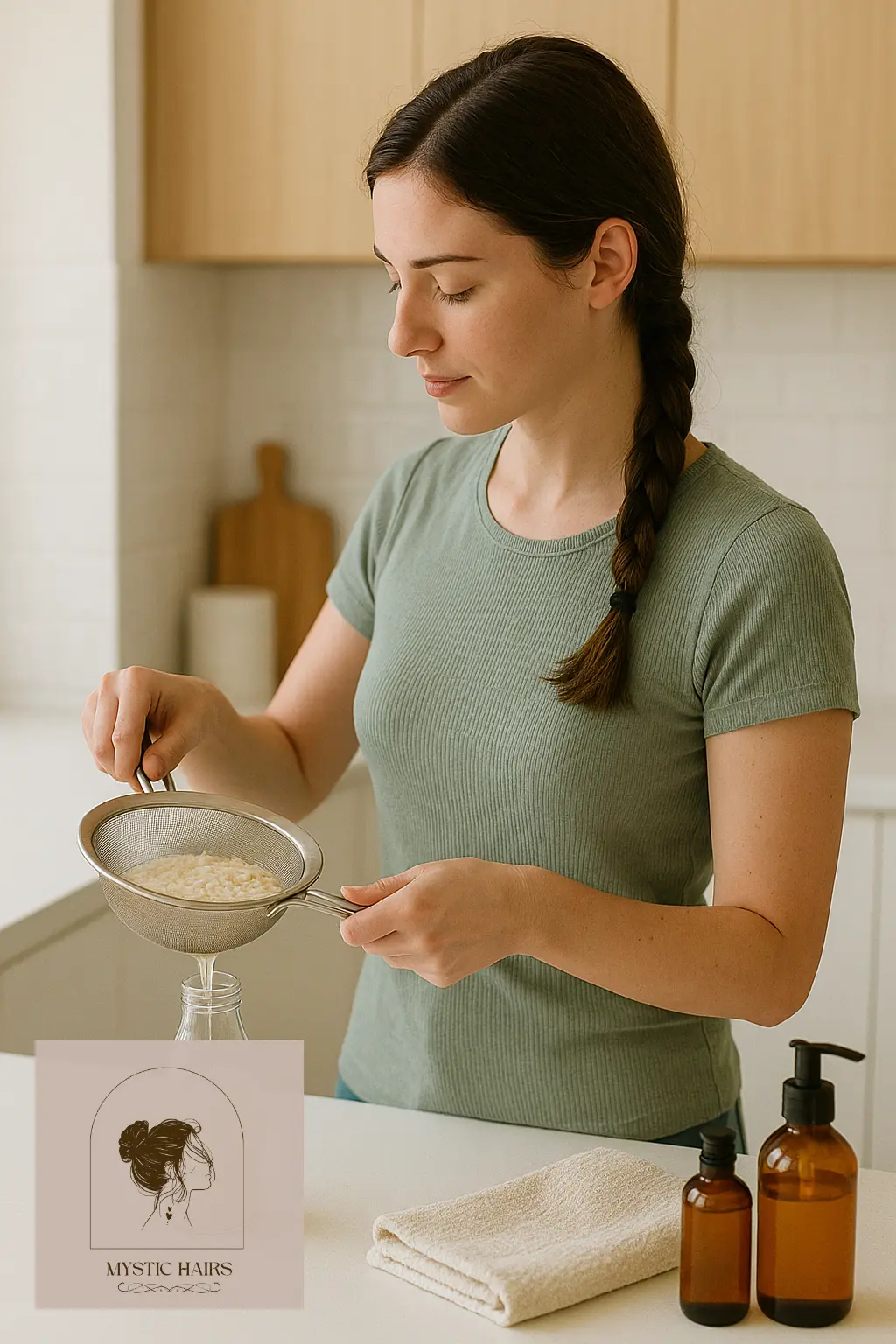
12. Sleep on a Silk or Satin Pillowcase
Traditional cotton pillowcases can rough up the hair cuticle, leading to friction, tangling, and breakage overnight. Replacing them with silk or satin pillowcases is a small but powerful change if you want to repair damaged hair naturally. These smooth fabrics reduce friction, maintain moisture, and keep hairstyles intact for longer.
This simple switch also helps preserve the effects of your deep conditioning or oiling routines by preventing overnight moisture loss. It’s an easy, passive way to reduce stress on your strands as they recover from heat or chemical damage.

Find expert tips for detangling curly hair without breakage. Learn gentle techniques, best brushes, and natural products to keep curls defined, smooth, and damage-free.
13. Try a Banana and Honey Mask for Softness
Bananas are rich in potassium and silica, which strengthen hair and improve elasticity, while honey acts as a humectant, drawing moisture into the strands. Together, they form a powerful duo to repair damaged hair naturally. This mask is especially effective for dry, frizzy, or brittle hair types.
Mash one ripe banana with two tablespoons of honey and apply it evenly to your hair. Leave it on for 20–30 minutes and rinse thoroughly. Your hair will feel instantly softer, smoother, and more hydrated after just one treatment—and even better with regular use.
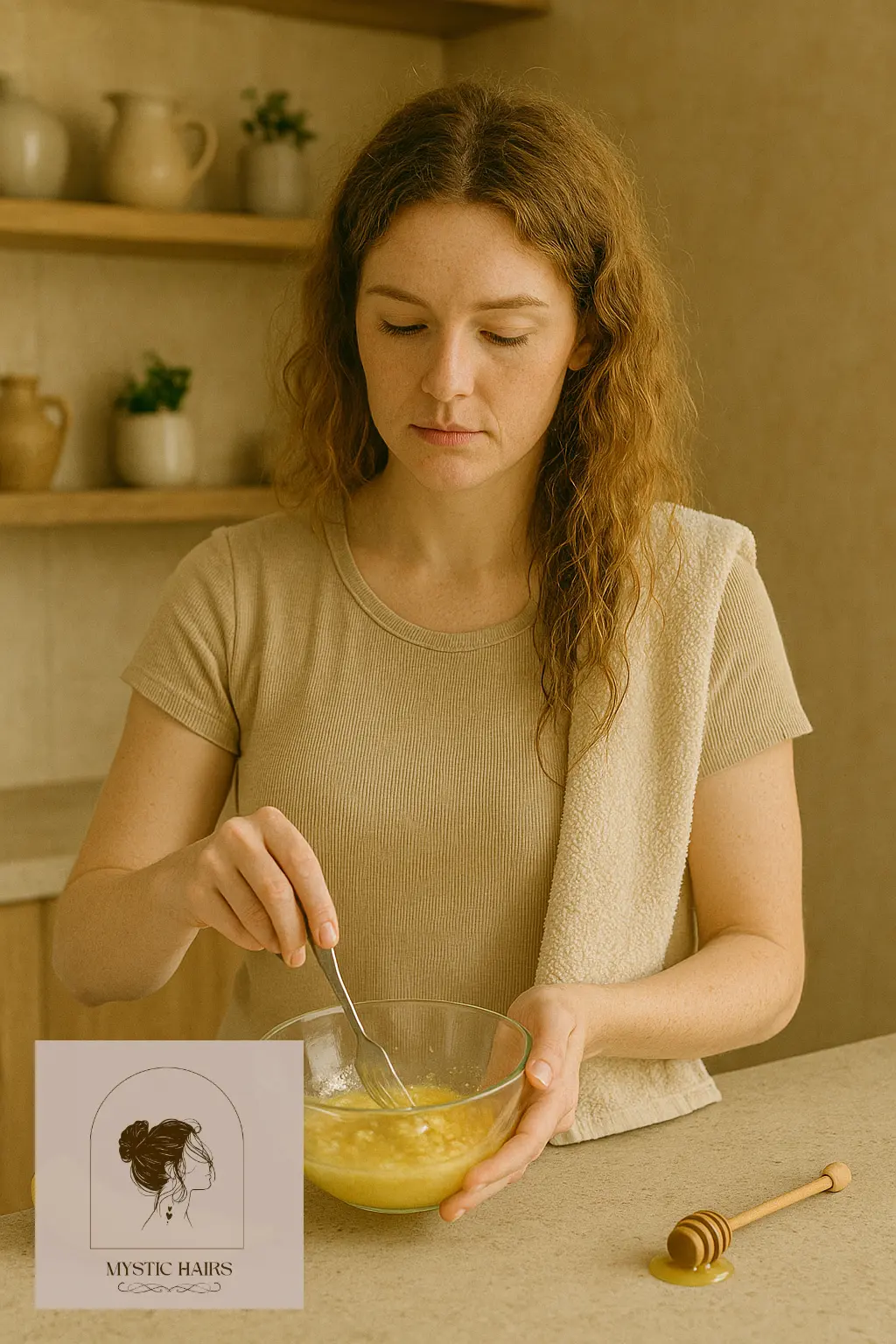
14. Avoid Overwashing to Retain Natural Oils
Washing your hair too frequently strips away the natural oils that protect and moisturize it. One of the best habits to develop when you want to repair damaged hair naturally is to cut back on washing—ideally to two or three times per week, depending on your hair type.
This allows your scalp’s oils to do their job—coating the hair shaft, reducing dryness, and forming a protective barrier. In between washes, you can use a gentle herbal rinse or simply rinse with water to refresh your hair without over-cleansing it.
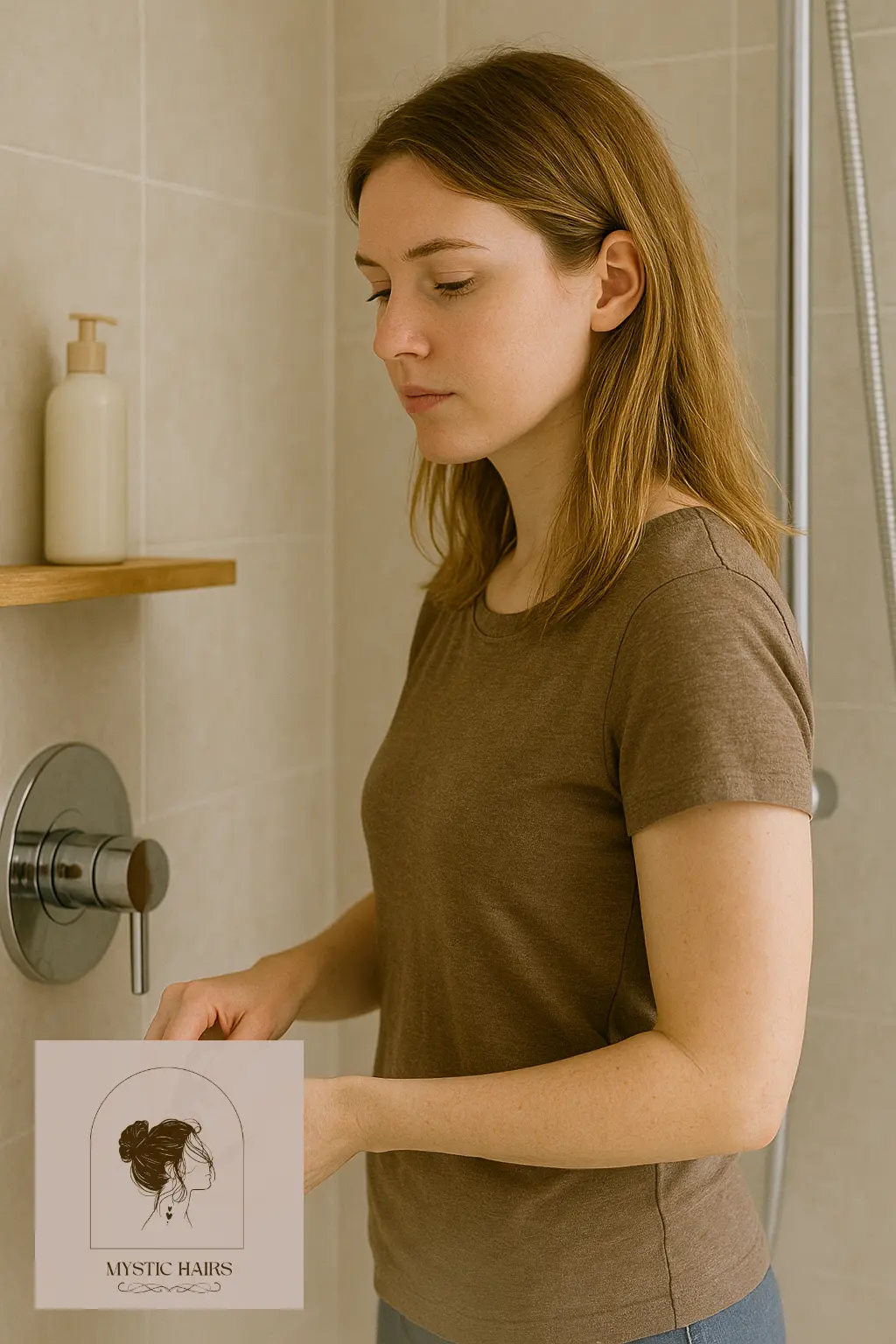
15. Braid or Tie Hair Loosely Before Bed
Leaving your hair loose while you sleep can cause tangling, knotting, and breakage, especially if it’s already weak or dry. Braiding or loosely tying your hair helps prevent this overnight friction. It’s a protective habit that complements your efforts to repair damaged hair naturally.
Avoid tight ponytails or elastics, which can cause tension and breakage. Instead, opt for soft scrunchies, loose braids, or a silk scarf wrap. This reduces stress on the roots and ends, and helps maintain moisture levels—especially after oiling or treatment masks.

16. Deep Condition Weekly with Natural Ingredients
Regular deep conditioning is a must if you want to repair damaged hair naturally and restore its moisture, strength, and shine. Natural ingredients like aloe vera, coconut cream, and avocado penetrate deeply into the hair shaft, replenishing nutrients lost due to heat styling, dyeing, or dryness.
Apply your chosen deep conditioning mix once a week, covering your hair from roots to tips. Leave it on for 30–45 minutes under a shower cap to let it fully absorb. This weekly ritual helps reduce split ends, frizz, and breakage while improving overall hair manageability. Over time, it becomes one of the most effective steps in any natural hair repair routine.
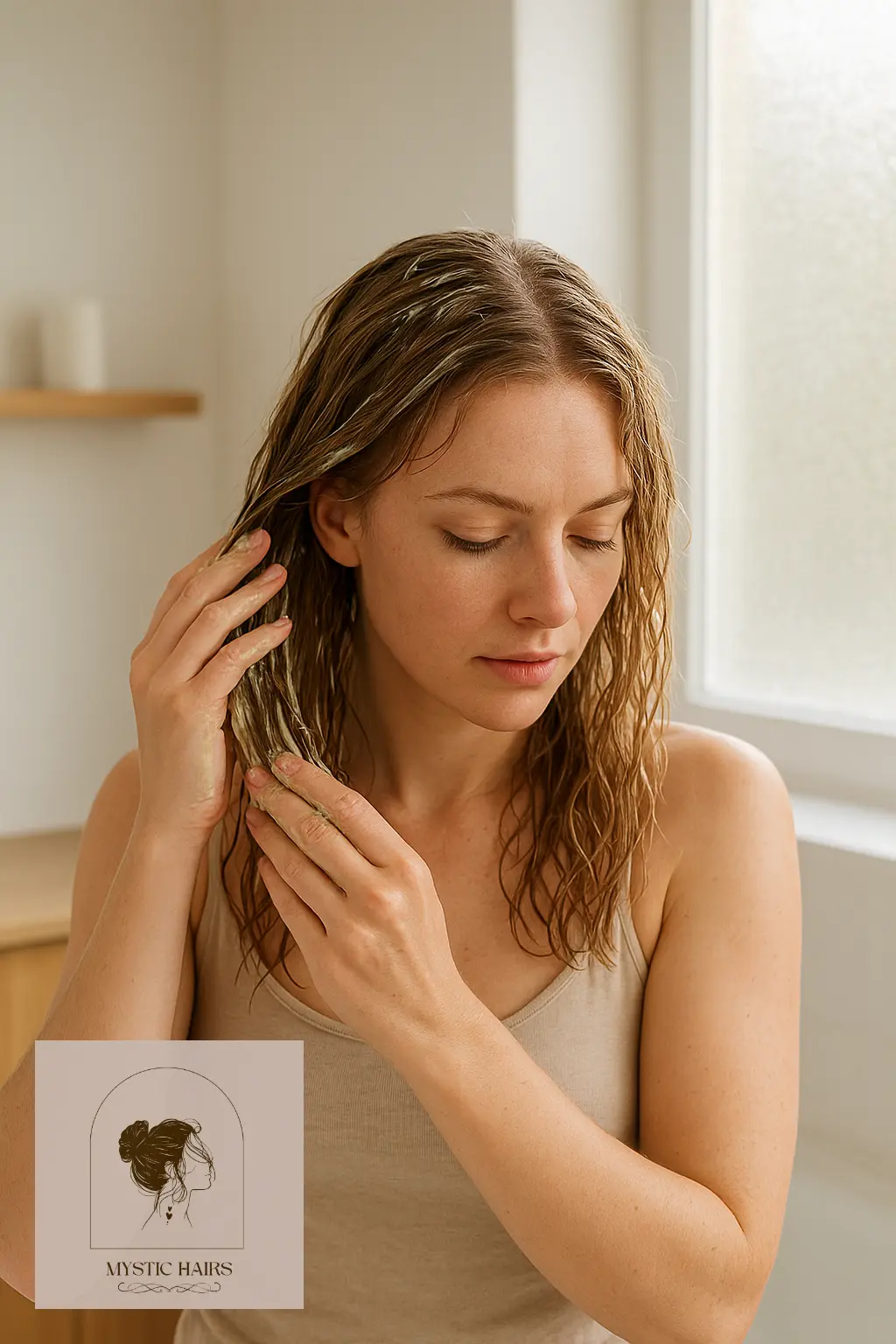
17. Use Lukewarm or Cool Water When Washing
Hot water may feel relaxing, but it strips your scalp and strands of essential oils. If you’re aiming to repair damaged hair naturally, always wash and rinse your hair with lukewarm or cool water. This helps seal the cuticle, lock in moisture, and preserve the effects of nourishing treatments.
Cool water also helps reduce frizz and enhances shine, making your hair look healthier. While it might require a little patience to adjust, this habit supports your overall goal of healing hair naturally without causing additional thermal stress. Pair it with sulfate-free cleansers and moisturizing masks for optimal results.

Explore the best natural ingredients for curly hair that hydrate, define, and protect. Enhance your curls with oils, butters, and remedies for frizz-free, healthy hair.
18. Limit Brushing When Hair Is Wet
Wet hair is far more fragile than dry hair, and aggressive brushing can lead to serious breakage. If your goal is to repair damaged hair naturally, always detangle gently using a wide-tooth comb or your fingers, starting from the ends and working your way up.
Apply a bit of leave-in conditioner or natural oil beforehand to add slip and reduce tension. This method prevents unnecessary pulling and helps preserve the hair’s structure while it’s in a vulnerable state. By protecting your strands during detangling, you create a healthier environment for repair and regrowth.

19. Incorporate Herbal Infusions for Scalp Health
Scalp health is often overlooked, yet it’s crucial when trying to repair damaged hair naturally. Herbal infusions made from rosemary, hibiscus, nettle, or fenugreek promote circulation, reduce inflammation, and strengthen follicles. These herbal rinses act as a tonic, nourishing both your scalp and strands without chemicals.
Brew a strong tea using your chosen herb, let it cool, and use it as a final rinse after washing your hair. Regular use boosts shine, soothes scalp irritation, and encourages stronger, thicker growth from the roots. It’s a simple, cost-effective addition to your natural hair care routine.
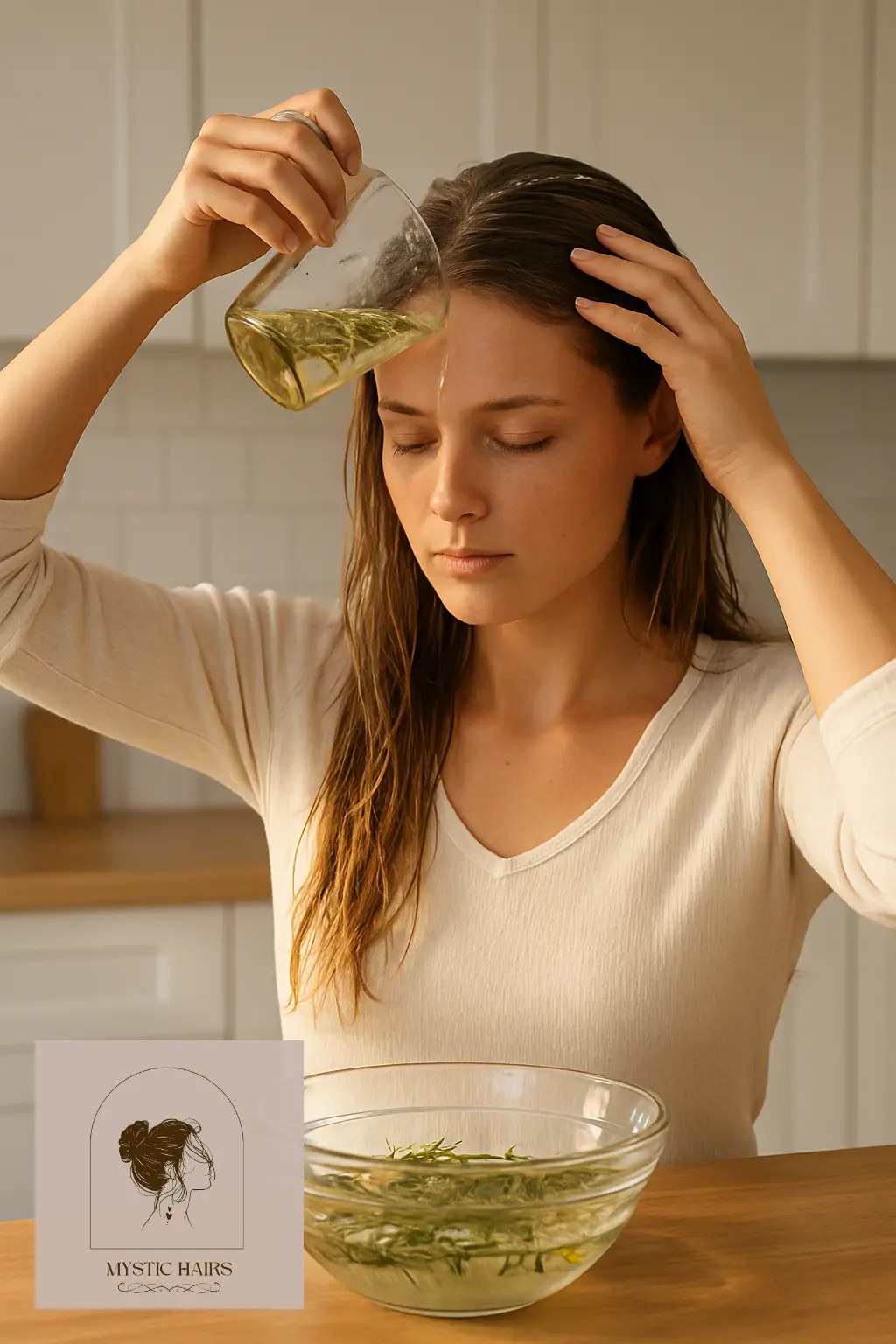
20. Be Patient and Consistent with Your Routine
Perhaps the most important tip in your journey to repair damaged hair naturally is to remain patient and consistent. Natural remedies work gradually and require steady commitment. Hair that’s been damaged over months or years won’t heal overnight—but with regular care, visible improvements are inevitable.
Create a routine that includes gentle washing, natural treatments, protective styling, and a healthy lifestyle. Track your progress monthly, not weekly. The results—stronger, shinier, softer hair—will not only be worth the wait but will also encourage you to stick with healthy, sustainable habits.

Natural Hair Masks for Extra Nourishment
If you’re looking for an extra boost to repair damaged hair naturally, DIY natural hair masks can work wonders. These masks are easy to make at home and often use ingredients from your kitchen. A popular blend includes mashed ripe banana, olive oil, and a spoonful of honey. This combination helps replenish lost moisture, smooth rough cuticles, and restore shine.
Apply the mask to damp hair, focusing on the mid-lengths and ends. Cover your hair with a shower cap and leave it on for 30–40 minutes before rinsing. This process deeply conditions your strands, especially if they’ve been heat-styled or chemically treated. Adding a nourishing mask into your weekly routine can dramatically improve your hair’s softness, elasticity, and strength over time.
Another effective option for those seeking to heal damaged hair naturally at home is an egg and yogurt mask. Rich in protein and healthy fats, this blend helps rebuild weak hair structure while enhancing luster. Use it once every two weeks to support keratin production and prevent further breakage. Natural masks provide that much-needed rescue without synthetic chemicals or additives.
Manage Stress for Healthier Hair Growth
One often overlooked way to repair damaged hair naturally is to reduce stress. Chronic tension, anxiety, and emotional exhaustion can trigger hair thinning, increased breakage, and scalp issues like dryness or flakiness. When your body is in a constant state of stress, it produces more cortisol, which interferes with hair growth cycles.
Incorporating calming activities like meditation, deep breathing, walking, or yoga into your routine can help manage stress levels. Creating a self-care routine that supports your mental and emotional health also promotes a better environment for hair healing. When your inner world is calm, your body—including your hair—can focus on restoring balance and vitality.
Final Note: Small Habits, Big Hair Transformations
Learning how to repair damaged hair naturally takes time, commitment, and gentle care. But the payoff is huge—restored softness, improved strength, and the confidence that comes with healthy, beautiful hair. Whether you’re battling heat damage, split ends, or chemical over-processing, nature provides the most effective remedies when used consistently.
From nourishing oils and protective styles to herbal rinses and homemade masks, your daily habits will determine how quickly and thoroughly your hair recovers. Be patient with the process and kind to your hair. With the right blend of natural practices and mindful routines, you can absolutely bring your hair back to life—naturally and beautifully.

Aria Blake is a beauty writer and hairstyle curator passionate about empowering women through timeless trends and modern haircare. With a deep love for natural textures and creative styling, Aria blends expert tips with real-life inspiration to help you look and feel your best—every single day. When she’s not writing for MysticHairs.com, you’ll find her exploring protective styles, sipping herbal tea, or pinning dreamy looks for your next hair glow-up.
